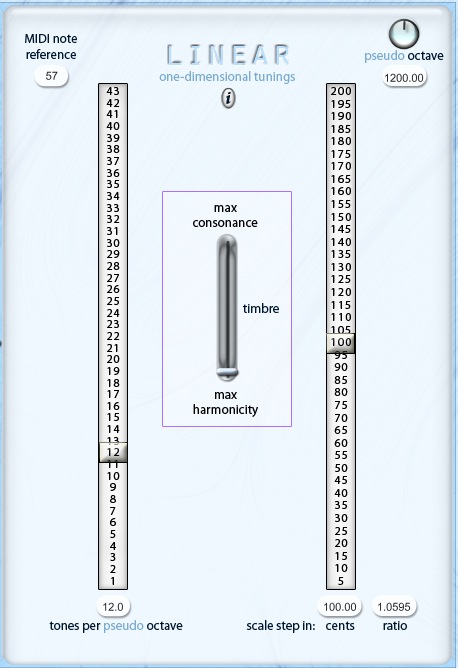

About Equal TemperamentsYou probably learned in school that the octave is divided into twelve equal pieces called semitones. Did you ever wonder why? Why 12 and not 10? Why 12 and not 17? Or 19... or 22... Now you can easily explore other divisions. Just change the large vertical sliders...
Change the vertical slider to 10 and immediately, there will be 10 tones in each octave. If you play a C note, and then play the Bb above, you will hear an octave. The other keys are retuned to equal intermediate steps. Change the vertical slider to 19 and immediately, there will be 19 tones in each octave. If you play a C key, and then play the G key an octave and a fifth above, you will hear an octave. The other keys are retuned to equal intermediate steps. But don't other tunings sound bad? Sure. You can sound bad in any tuning, including 12-tones per octave. There's no magic trick that's going to make everything you play sound good. But there's no reason why you can't sound good in just about any tuning either. Especially if you use the sliders to change the timbre (or sound quality) to match the tuning. The TransformSynth even allows you to change the size of the octave, too! |
©2008 William Sethares; site design by Anthony Prechtl |